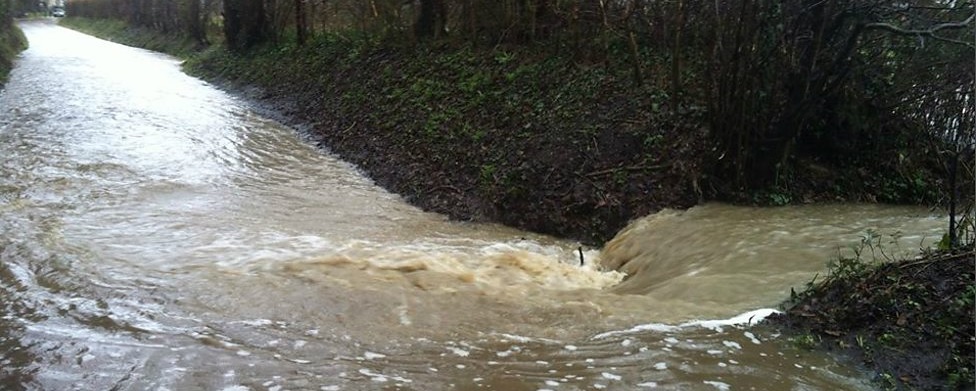
Surface Water Management: Written statement – HCWS368
Unda share the observations and concerns as described in this Parliamentary statement on the 19th December 2017.
Surface Water Management: Written statement – HCWS368
Authored by Dr Coffey
Following the National Flood Resilience Review we are better prepared this winter for flooding from all sources: The Environment Agency now has 25 miles of mobile flood barriers, 250 mobile pumps and 500,000 sandbags. These flood barriers and mobile pumps are ready to go anywhere in the country. This allows us to respond rapidly and flexibly to help protect communities, homes and businesses.
The Budget announced an additional £76 million to be spent on flood and coastal defence schemes over the next three years. This boosts flood defence investment to over £2.6 billion by 2021.
Our flood defence programme is protecting more and more homes across the country, and we have 100,000 homes better protected by the 350 new schemes completed in the last two years.
As well as being prepared for this winter, it is right that we look ahead to future challenges, including in relation to surface water management. Surface water flooding occurs when excessive rainfall from storms overwhelms local drainage capacities. Changing weather patterns and population growth will have impacts on the risk of surface water flooding going forward.
Local councils have clear statutory responsibilities as Lead Local Flood Authorities to manage surface water flood risks and work in partnership with other risk management authorities, including highways authorities and water companies (who have a duty to effectively drain their area). Power and communications companies also have roles in managing the risks of disruption to essential services.
In response to the commitment in the National Flood Resilience Review to look at issues affecting surface water in 2017, we have been working across Government to consider ways in which surface water management may need to be strengthened.
We have analysed information from a wide range of sources to inform this work. For example, looking at current flooding and drainage plans, undertaking local case studies, holding discussions at national stakeholder events and working with Water UK’s 21st Century Drainage programme.
We also need to take account of ongoing work by the National Infrastructure Commission and the Adaptation Sub-Committee as well as the soon to be published report of DCLG’s review of sustainable drainage systems in planning policy. As well as reducing the risk of surface water flooding, sustainable drainage can deliver water quality, biodiversity and amenity benefits, helping to make great places to live.
Using this evidence we have identified 5 key actions (set out below). Proposals to support these areas will be considered by the Inter Ministerial Group on Flooding early next year with a report outlining actions and an implementation timetable published in spring 2018.
In January 2018 my Department will co-host an event with Water UK to present our findings so far. Stakeholders will be able to contribute in shaping future actions. One of the main themes will be the collaboration of local authorities and other risk management authorities in delivering their statutory responsibilities and achieving the best outcomes for surface water management.
Five Action Areas:
- National position: This year government added the risk of surface water flooding to the National Risk Register within the “High Risk” banding. We will develop a clear national planning scenario for surface water flood risk based on plausible extreme rainfall events. This will be tested by a panel of experts who will give an independent assessment of its suitability and its application to existing surface water risk maps and national objectives.
- Effective collaborative working: Our local case studies identified some very effective partnership working by risk management authorities. We will use the findings to work with others to build on this, including using the review of the national flood and coastal erosion strategy to ensure best practice is shared and priorities are aligned. The work of Water UK’s 21st Century Drainage Programme is a great start in this respect as they begin to develop over the coming months the framework for Drainage and Wastewater Management Plans. The content of these long-term plans will require exactly the kind of engagement and consultation with a range of organisations that will help foster greater partnership working and common goals and aims.
- Skills: Our research has shown that it is important to maintain the right balance of surface water flood and drainage skills at the local level. This project has identified some particular concerns, for example in relation to drainage engineering skills as well as staff retention and succession planning. We will work with others on actions to address skills and capacity issues.
- Maps and data: The Environment Agency is reviewing the current and future data needs for the mapping and modelling of surface water flooding. They aim to improve the availability, consistency and accuracy of data across the range of bodies involved.
- Forecasting: The Met Office and Environment Agency are carrying out a review on how improvements in surface water forecasting and communication can be made to make the best use of the information produced across the Met Office, Flood Forecasting Centre and Environment Agency.